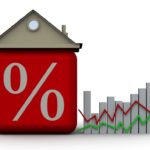 The pricing of interest rates are very nuanced, with (as many as) 12 factors influencing a borrower’s interest rate.
The pricing of interest rates are very nuanced, with (as many as) 12 factors influencing a borrower’s interest rate.
Pricing matrixes can be confusing even to the most experienced MLOs, so I’ve boiled this down to “the basics.”
Below is a list of factors that affect a client’s interest rate.
1) Property Type: Condominiums, manufactured homes, and multi-unit dwellings (2 – 4 units) have higher interest rates than single-family houses.
2) Property Use: Rental and second homes have higher rates than owner-occupied properties.
3) Credit Scores: All loan rates are based on “risk-based pricing.” The higher the credit scores, the lower the rate. A borrower with a 740 (mid) Fico score could have a rate as much as .25% lower than a borrower with a 640 mid-score (2.25% vs. 2.5%).
4) Down Payment: The larger the down payment, the lower the rate. Typical thresholds are: Zero Down (VA), 3.5% down (FHA); 5% down, 10% down, 20% down and 25%+ (Fannie /Freddie)
5) Loan Amount: Smaller loans (under $125,000, for example) can have fractionally higher rates, as can jumbo loans (over $1 million).
“Conforming” vs. “High Balance Conforming”: Every U.S. county has a basic loan limit (conforming loan limit) and then a “High Balance” conforming loan limits, which is typically .25% higher (2.75% vs. 2.5%).
For a list of loan limits for each county in California, click on my home page
Loan Type: FHA and VA rates are usually lower than conforming (Fannie/Freddie) rates.
However, FHA has a 1.75% funding fee (rolled into the loan) and .85% monthly mortgage insurance payment.
The monthly fee is for the life of the loan (although there is an exception for a 15-year loan).
VA loans have no monthly mortgage insurance fee but a 2.5-point funding fee (rolled into the loan balance). For example, A $400k loan would have a $10k funding fee.
Additionally, if a veteran has a service-related disability, all or a portion of the funding fee is waived.
5) Rate Lock Period: In most cases, interest rates can be “locked in” or guaranteed before the close of escrow for 15, 30, 45, or 60 days. The longer the lock period, the higher the rate/fees.
Many lenders quote rates associated with very short (15-day) lock periods, even though most escrows require more extended lock periods.
6) Loan Maturity: The longer a rate stays fixed, the higher the rate. Typically, a 15-year loan is a half-point lower (2% vs. 2.5%) than a 30-year loan.
7) Fixed vs. Adjustable Rates: The “rate spread” between a 30-year fixed-rate loan and a 5-year adjustable-rate loan is .125% (2.5% vs. 2.375%).
8) Points/Fees: Lenders often include hidden points and fees in their quotes that they do not disclose upfront when they quote a rate. Never pay points.
9) No-Cost Refis: “No-cost” refinances have higher rates than refinances with built-in fees.
10a) Loan Purpose: Purchase vs. Refinance loans. “Purchase loans” are typically fractionally lower than a “rate and term” refinance loan. (2.4% vs. 2.5%)
10b) Loan Purpose: Specialty loan products such as “land and constructions” have higher rates and fees (points) than typical loan programs.
Note: I have no sources of money to fund “land” or “construction loans“, for more information please click on the links above for general information.
10c) Loan Purpose “Cash Out Refis: When refinancing, borrowers increase their new loan balance to pull ‘cash-out’ to pay off debts or for home improvement.
11) Loan-to-Value (LTV) Loans with LTVs under 70% have a lower interest rate than those with LTVs above 70%.
Rates are higher depending on the “loan to value” ratio.
12) Lien Position: First trust deed loans have a lower interest rate than second. There is an exception: Heloc (Home Equity Line of Credit) are adjustable-rate loans with a typical “start rate” of 1%.
Copywrite © August, 2018 Daniel Dobbs MHM Mortgage /// All rights reserved. No part of this publication may be reproduced, distributed, or transmitted in any form or by any means, including photocopying, recording, or other electronic or mechanical methods, without the prior written permission of the publisher, except in the case of brief quotations embodied in critical reviews and certain other noncommercial uses permitted by copyright law. For permission requests, write to the publisher, addressed “Attention: Daniel Dobbs, Author- VP-Broker Mutual Home Mortgage 265 S. Randolph #120 Brea, Ca. 92821 Cell: 949 250-3981 Dandobbs6@gmail.com NMLS #307631 BRE #00986886
